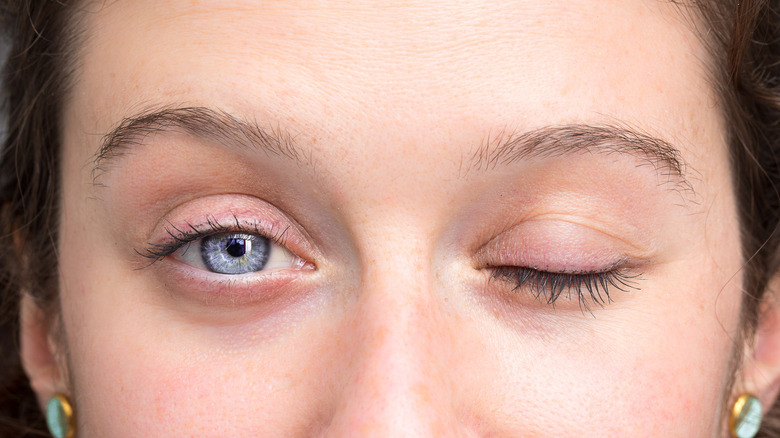How Long Does Bell's Palsy Usually Last?
According to the National Institute of Neurological Diseases and Stroke, 40,000 people develop Bell's palsy yearly in the United States. The condition can affect anyone, but especially those between 15 and 45 years old.
Mayo Clinic notes that Bell's palsy is a condition where the muscles on one side of the face weaken, causing it to droop. Often, it starts suddenly, worsening over a few days, but symptoms usually improve within a few weeks.
The exact cause is unknown, but experts believe it's caused by an inflammation or swelling of the nerve that controls the muscles on the side of the face (via Cleveland Clinic). Symptoms can include speech difficulty, headache, facial pain, or ear pain.
Pregnant women are also at risk of developing Bell's palsy. One 2019 study published in the journal Obstetrical & Gynecological Survey notes that the prognosis of pregnancy-related Bell's palsy is worse than in non-pregnant individuals and can include complete facial paralysis.
How long does Bell's palsy last?
According to the National Institute of Neurological Diseases and Stroke, there's no specific laboratory test to confirm the diagnosis of the disorder. The patient's clinical presentation can help diagnose the condition and its cause with other blood tests being done to rule out other diseases that may contribute to facial paralysis.
It appears that only a few cases of Bell's palsy last a lifetime. NHS UK says most people recover within nine months. However, Healthline states that the recovery rate will depend on how much nerve damage there is. So, you may start seeing improvements within 2 to 3 weeks if the damage is mild.
The source also indicates that most people who experience their first Bell's palsy episode completely recover without severe complications. But in rare cases, Bell's palsy patients can also experience dryness in the affected eye. This can cause ulcers, infections, or even vision loss.
Bell's palsy treatment options
The NHS notes that Bell's palsy can't be prevented. In fact, you can get it again after your first case, especially if you have a history of the condition in your family.
There are several methods that may help Bell's palsy patients manage symptoms. For instance, Mayo Clinic states that antivirals combined with steroids might be beneficial. However, this treatment option hasn't been proven. The same applies to combining antiviral drugs like valacyclovir (Valtrex) or acyclovir (Zovirax) with prednisone.
According to WebMD, your doctor might administer a short course of a corticosteroid like prednisone to help with swelling and inflammation. The source states that corticosteroids can reduce the duration of Bell's palsy, especially if you take them within 72 hours after experiencing your first symptoms. WebMD also outlines numerous exercises to help people increase muscle strength and regain facial coordination after paralysis. For example, you can begin by stimulating or trying to move every part of your face slowly. Next, use your fingers to lift your eyebrows and gently massage different parts of your face, from your forehead to your cheeks.



